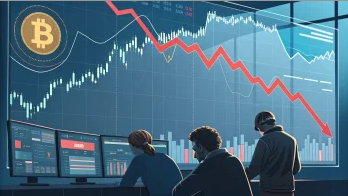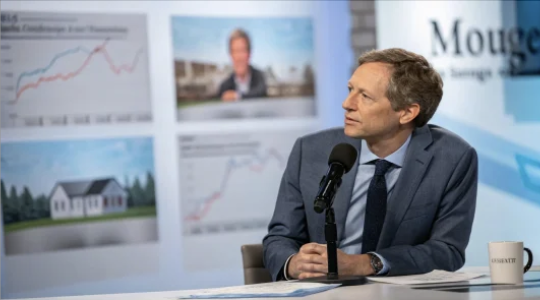It’s Fed Day, a highly anticipated event in the financial world when the Federal Reserve makes its interest rate decision. This decision can significantly impact not only the stock market but also the broader economy by affecting credit card, mortgage, and other debt costs. In this article, we dissect a recent Instagram reel transcription, providing insight into the potential consequences of the Fed’s decision and the connection between interest rates, inflation, and economic growth.
We’ll also discuss the market’s expectations, factors driving the Fed’s decision-making process, and how individuals and businesses can prepare for various outcomes.
View this post on Instagram
A post shared by Taylor Sohns- CFP®, CIMA®, MBA- Finance (@lifegoalinvestments)
Table of Contents
ToggleThe marketes expectations and possible scenarios
According to the Instagram reel, the market believes with 99% certainty that the Fed will not raise interest rates. Despite this confidence, it’s essential to be aware of two critical reasons to stay alert during the announcement. Firstly, if the Fed surprisingly raises interest rates, it could cause a “rug pull,” resulting in an adverse market reaction. Secondly, the announcement can provide insight into the Fed’s future game plan, which could provide valuable information for anyone making financial decisions.
The reel continues by predicting that the Fed would maintain the current interest rates but talking about higher interest rates for extended periods to control potential inflation risks. This prediction will be based on various factors, including GDP growth and hints of inflationary pressures.
The relationship between interest rates, inflation, and economic growth
Understanding how interest rates, inflation, and economic growth are interconnected is crucial when assessing the impact of the Fed’s decisions. The Fed adjusts interest rates to influence the overall economy. Lowering rates tend to stimulate borrowing and spending, ultimately encouraging economic growth. In contrast, raising rates makes borrowing more expensive, which can dampen growth but help control inflation.
Inflation occurs when there is too much money chasing too few goods, subsequently causing prices to increase. High inflation can erode the value of money and create an uncertain economic environment. Therefore, the Fed aims to maintain a delicate balance – boosting growth without igniting inflation.
Assessing the impact of a strong GDP growth
The reel notes a recent 4.9% GDP growth, indicating the economy is humming. While economic growth is generally seen as a positive development, robust growth can also put upward pressure on inflation. Consequently, the Fed may need to adopt a more hawkish stance to prevent inflation from spiraling out of control.
It’s essential to be cautious about reading too much into a single data point. GDP growth can vary from quarter to quarter and does not always accurately represent long-term economic trends. Nevertheless, strong GDP growth can signal that the economy is in good shape, at least for now.
The Fed’s communication strategy and the market’s reaction
When the Fed delivers its interest rate announcement, any changes to its forward guidance or language can significantly impact the market’s response. In the reel’s prediction scenario, the Fed does not raise rates but talks about higher interest rates for longer periods – a potentially hawkish approach. How convincingly they convey this stance may determine the market’s reaction.
Markets tend to react positively when they perceive the Fed is being cautious about potential risks to inflation and growth. However, a too aggressive posture could spook investors, potentially causing negative market reactions like the aforementioned “rug pull.”
Preparing for diverse outcomes
Given the uncertainty surrounding the Fed’s actions and the economy, individuals and businesses should have contingency plans for various scenarios:
- Scenario 1: The Fed does not raise rates and maintains a dovish tone. In this situation, investors can likely expect the stock market to continue its positive trend. Borrowers may also benefit from lower costs of debt.
- Scenario 2: The Fed raises rates unexpectedly. This development may trigger a “rug pull” and a negative market response. Investors should be prepared for potential volatility and reassess their investment strategies accordingly.
- Scenario 3: The Fed does not raise rates but adopts a hawkish tone. This situation could generate a mixed market reaction. Preparing for potential volatility and being flexible with financial plans is essential.
Staying informed and adapting to change
In conclusion, understanding the implications of the Fed’s interest rate decisions and how they relate to inflation and economic growth is crucial for investors, borrowers, and other market participants. Although the Instagram reel prediction suggests that the Fed will not raise rates shortly, it is essential to stay informed, adapt to changing conditions, and prepare for various outcomes. This adaptability will enable individuals and businesses to successfully navigate the evolving economic environment and make informed financial decisions.
Frequently Asked Questions – November 1st, 2023
What is Fed Day?
Fed Day is a significant event in the financial world when the Federal Reserve makes its interest rate decision. This decision can impact the stock market, broader economy, and costs of various debts such as credit cards and mortgages.
How does the Federal Reserve’s decision on interest rates affect the economy?
The Federal Reserve’s decision on interest rates can influence the overall economy by affecting borrowing and spending. Lower interest rates stimulate borrowing and spending, encouraging economic growth, while higher interest rates make borrowing more expensive, dampening growth and helping control inflation.
What is the connection between interest rates, inflation, and economic growth?
Interest rates, inflation, and economic growth are interconnected. The Fed adjusts interest rates to influence the overall economy. Lowering rates tend to stimulate borrowing and spending, ultimately encouraging economic growth. In contrast, raising rates makes borrowing more expensive, which can dampen growth but help control inflation.
How does strong GDP growth impact the economy and the Fed’s decision-making process?
Strong GDP growth indicates a robust economy. However, it can also put upward pressure on inflation, and the Fed may need to adopt a more hawkish stance to prevent inflation from spiraling out of control. It’s crucial not to read too much into a single data point, as GDP growth can vary over time and doesn’t always represent long-term economic trends.
What are the possible scenarios based on the Fed’s interest rate decisions, and how can individuals and businesses prepare for those?
There are three main scenarios: 1) the Fed does not raise rates and maintains a dovish tone, 2) the Fed raises rates unexpectedly, 3) the Fed does not raise rates but adopts a hawkish tone. In each situation, individuals and businesses should have contingency plans to deal with potential market reactions, including potential volatility and reassessing investment strategies.
What is the importance of staying informed and adapting to change regarding the Fed’s decisions?
Staying informed and adapting to change is crucial for investors, borrowers, and other market participants as it enables them to navigate the evolving economic environment successfully, make informed financial decisions, and prepare for various outcomes related to the Fed’s interest rate decisions.

















